Wed 7th Aug 2019
Sitting at anchor in Bull Harbour, a very safe little bay on the southern side of Hope Island.

The Tlatalsikwala band a First Nation group own this island and we can’t go ashore without first getting permission. It’s a pretty place, but we are only here as it’s a convenient place to wait for the tides and weather to get round the top of Vancouver Island, in particular, Cape Scott. Tomorrow we leave at 09:30 am in order to reach cape Scott at slack water, around 13:30, The forecast so far is for decent weather, so I’m not the least concerned, despite lots of doom and gloom mentioned in the pilot book. Talk of the infamous Cape Scott and lives lost, ships wrecked or sunk, strong currents and steep waves. I sometimes think they over emphasise these things, they are certainly terrifying to those just setting out on a life of cruising. I have found you can usually get a good feel for if the weather is going to get bad from the forecasts, experience and local knowledge, also as soon as the weather starts to deteriorate, you can generally find somewhere safe to wait it out. The other thing is, you should be able to handle extremely bad weather anyway, as it can happen at anytime, and the boat should be up to it. The main thing is to get away from dangerous shorelines and reefs as quickly as possible if the weather looks like it’s going to get bad, and you can’t get into a safe place.
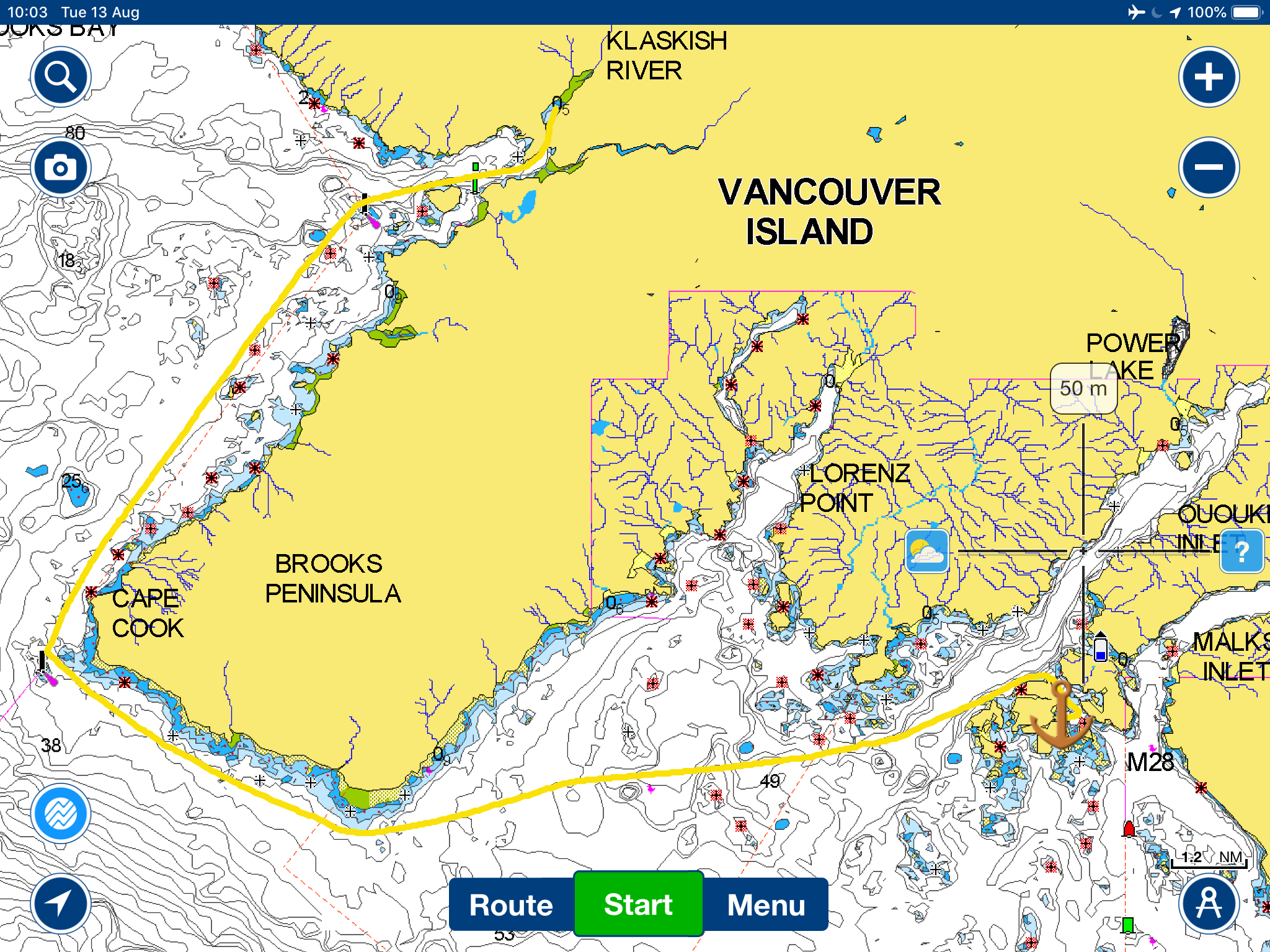
Once we round Cape Scott we will head into a little cove called Sea Otter Cove, which should be well protected while we wait for the next opportunity to carry on down the coast. This is the Pacific side of Vancouver Island and we are exposed to the waves and sea swell coming across over a few thousand miles of open ocean. Things will need to be stowed properly.
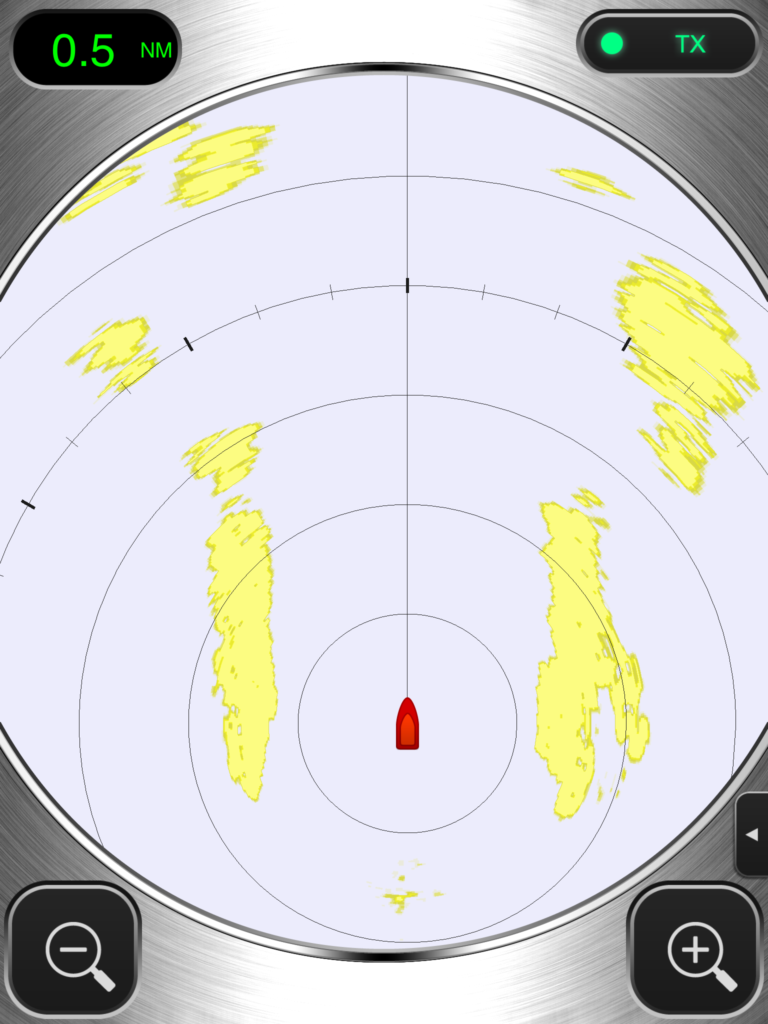
Technical Update:
I used the trip to Knight Inlet to test out the boats systems, often referred to as a shakedown cruise. As soon as we left Sointula it became apparent that the Autopilot didn’t work. I expected the fault to be in the wiring or rudder angle sensor, which is buried deep in the aft locker and as it was pouring with rain I decided not to empty the locker contents out, instead we hand steered and the next day I fixed the coupling to the rudder angle sensor. It works now, but I’m not impressed with its ability to steer a straight line, it’s path steered is closer to how I used to walk home from the pub, when I was a big brandy drinker.
Looking at the Forward looking Sonar sensor that lies on the deck on the end of a long pole I hang over the side of the boat, I noticed it was smashed and hanging off the bracket. I epoxied it all back together in a somewhat creative way and it seems to be working fine.
Not so lucky when I got the new iPad out to fire up the Navionics prog. This is the iPad with the faulty screen that was replaced in Japan. I had just paid £80 in Birkenhead to get a new screen (Screen number 2) and looking at it I couldn’t believe there was a crack running diagonally across the display. I have no idea how that happened, it’s been sitting on the cabin table minding its own business, then suddenly it’s cracked. I give up. At least it still works, but probably not for long. I bought a recon iPad before I left so we have a backup. Currently I use one iPad at the wheel and can flick between chart plotter and radar on it, and down below we have the MacBook running OpenCPN on the chart table with the radar running on the iPad next to it, so one o us can study the radar in detail from below.
We have a little iCom handheld VHF which is great for monitoring Ch16 in the cockpit, however it’s a bit rough, chipped and the antenna is falling apart, I’d love to buy a shiny new one, but that’s a few hundred pounds, so when it jumped out of my hand and disassembled itself on the cockpit sole, with plastic shards heading in every direction, I wondered if this would be my chance, sadly my miserly side took control and I have managed to tape it all back together, it works fine, in fact better than before now the antenna is taped up. It looks a state. I will have to keep an eye out for Black Friday type offers at West Marine.
The 65lb CQR now sits on the bow platform alongside the Spade anchor.
The USB charger outlet I installed at the wheel pedestal doesn’t have enough woomph to keep the iPad charged, but I can get about 20 hours I think, I can bring it below for a full charge if needed. On long passages we would steer using the Garmin chart plotter anyway.
The windlass thing that grips the chain, it’s not called a gypsy is it? should freewheel when the clutch is loosened, I took the whole thing apart in Malaysia and cleaned/greased it and it worked great, however it seems seized now, so I took it all apart, gave it another clean, but when I reassembled it the chain gypsy clutch was binding near the area where the key goes, so that was not going to solve the problem. I suspect something has changed shape in the last couple of years, very odd. I had to file a few thou off the inside surface of the clutch and it went back together well, in fact I was able to let the chain roll out at exactly the speed Kathy was reversing today, and we set the anchor in record time.
Altogether I’m delighted with the boat and its systems. I’d love to replace all the electronics with the latest Multifunction displays, but we get by with the mishmash we have. The main worry now is how to get a new spray dodger for the cockpit, the current one will depart the boat with the next strong wind. I tried to order one in Canada at Cambell River, however they didn’t seem keen to have my business. Possible in Mexico I can find someone to knit me a new one, or maybe San Diego.
Thursday 8th
We left Bull Harbour around 9AM in order to round Cape Scott at slack/low water at 13:30. The sea was calm, light winds, but as we entered the Goletas channel, a good 15 knots popped up from the south, I unfurled the headsail to see if it would drive us along, and we were making 5 knots without any mainsail. I couldn’t be bothered to furl up the headsail, turn into the wind and raise the mainsail, so we chugged along with the engine off until we had crossed the channel. Then the wind dropped and we motored the rest of the way to Sea Otter Cove. Passing around the dreaded Cape Scott at slack water. Cape Scott was calm, but as we rounded it a southerly wind of 10-15 knots appeared and slowed us down a little. Soon we motored into our destination to see our new friends Robert & Vanessa anchored in the cove.
Robert & Vanessa have a boat called ‘For Good’ as they are on a mission to help raise environmental awareness. They are filmmakers and have given up life on land to sail away and make films about the changing world. You can found out more about them at www.sailingforgood.tv or on facebook as facebook.com/sailingforgood They bought their sailboat, a Cal 34, sold up their home and moved aboard before they had even learnt to sail, much braver than anything I have ever done. However they are finding the rapid learning curve a challenge, and when they arrived in the cove, they had gone aground trying to reach a mooring buoy. We tried to reassure them that it was no big deal, they had re-floated and anchored closer to us and where fine. We explained that it’s all about learning by mistakes, and they would be masters soon enough. Having rounded the ‘treacherous Cape Scott’ without incident gave them a boost I think. They are hoping to sail down the coast, as we are, to the Sea of Cortez, but are rather nervous about the passage. We are hoping to bump into them along the way again.
Sea Otter cove has provided a couple of Sea Otters for our entertainment, but no bears yet. Still we are waiting for low water
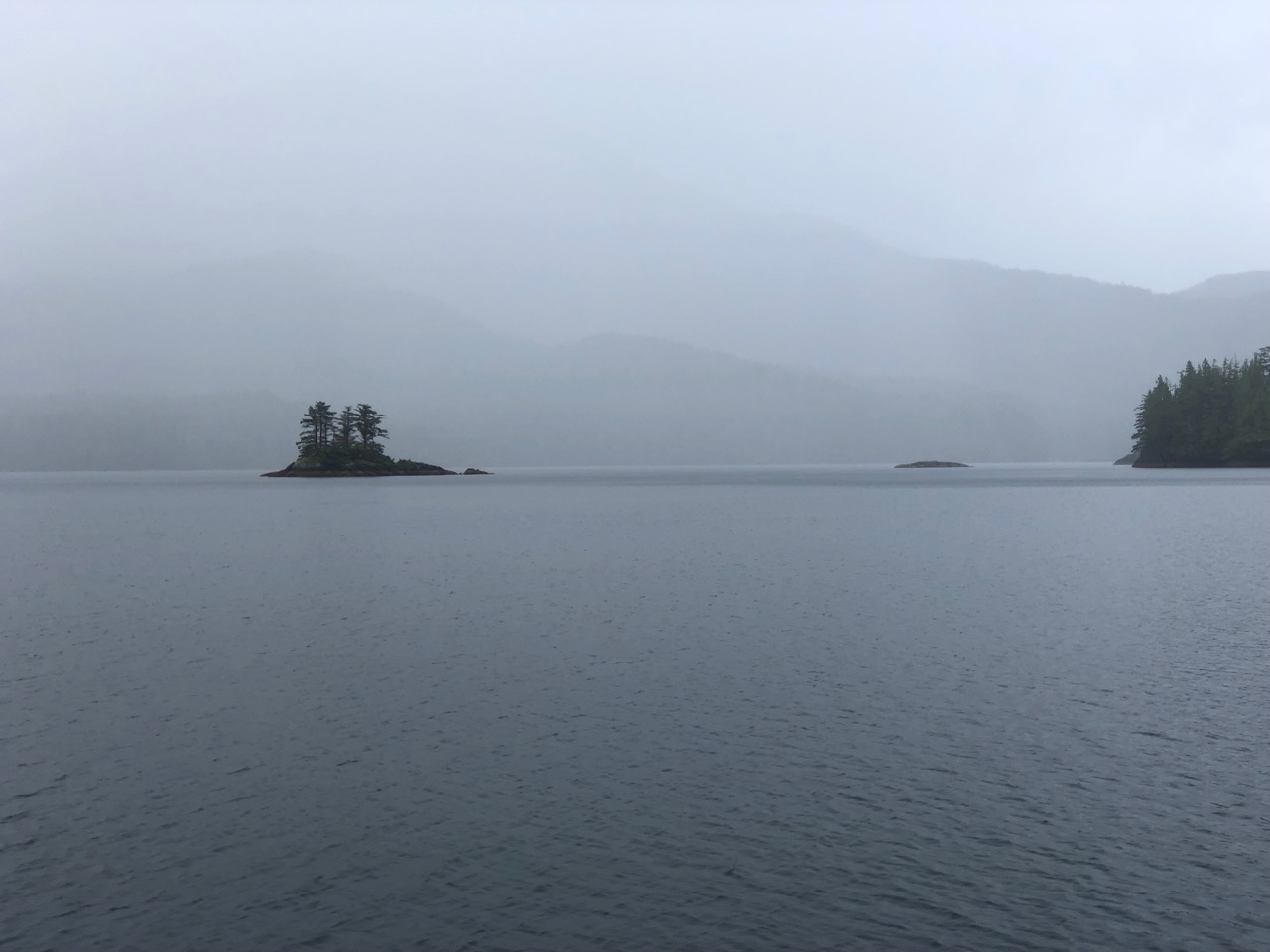

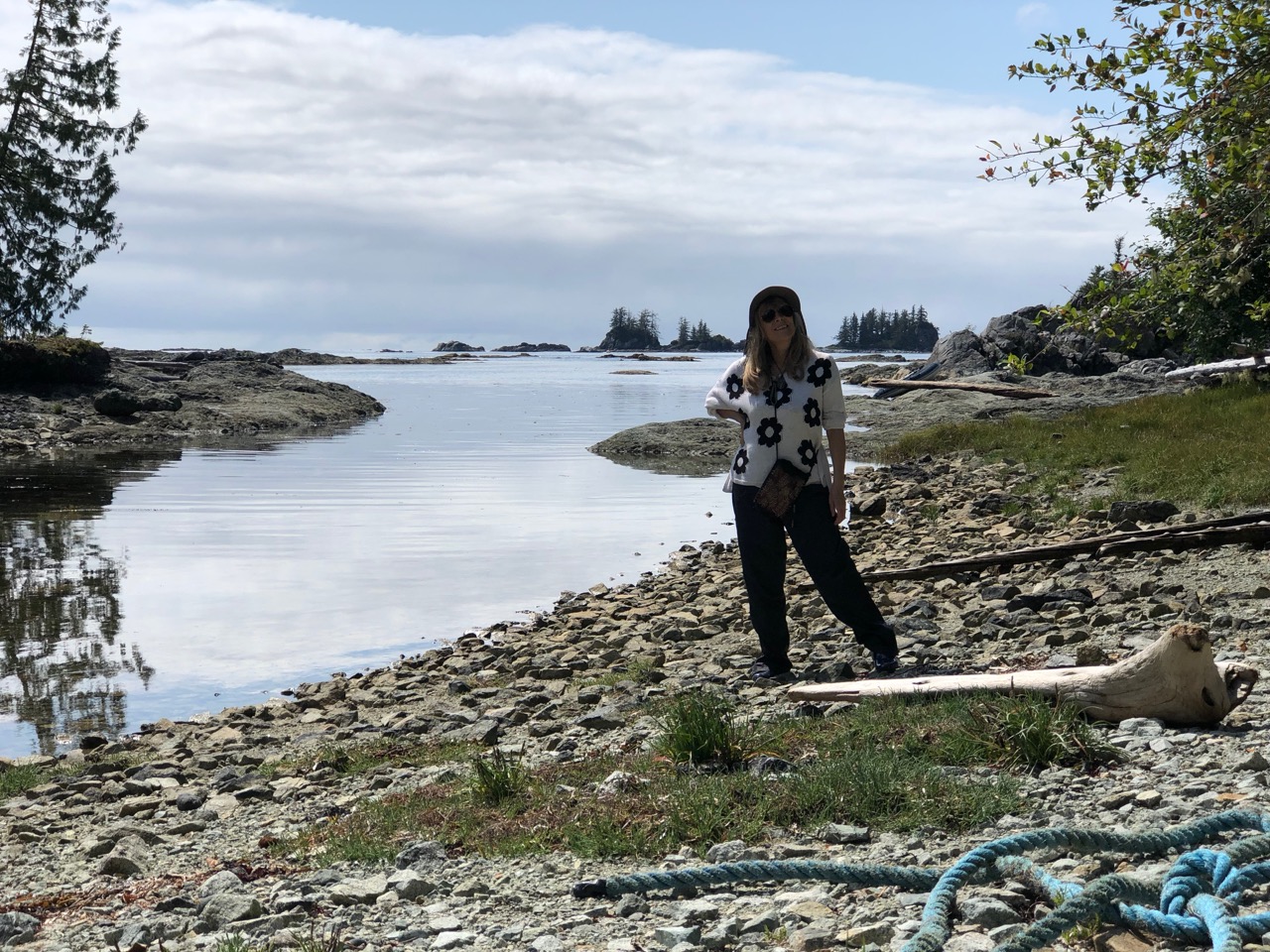
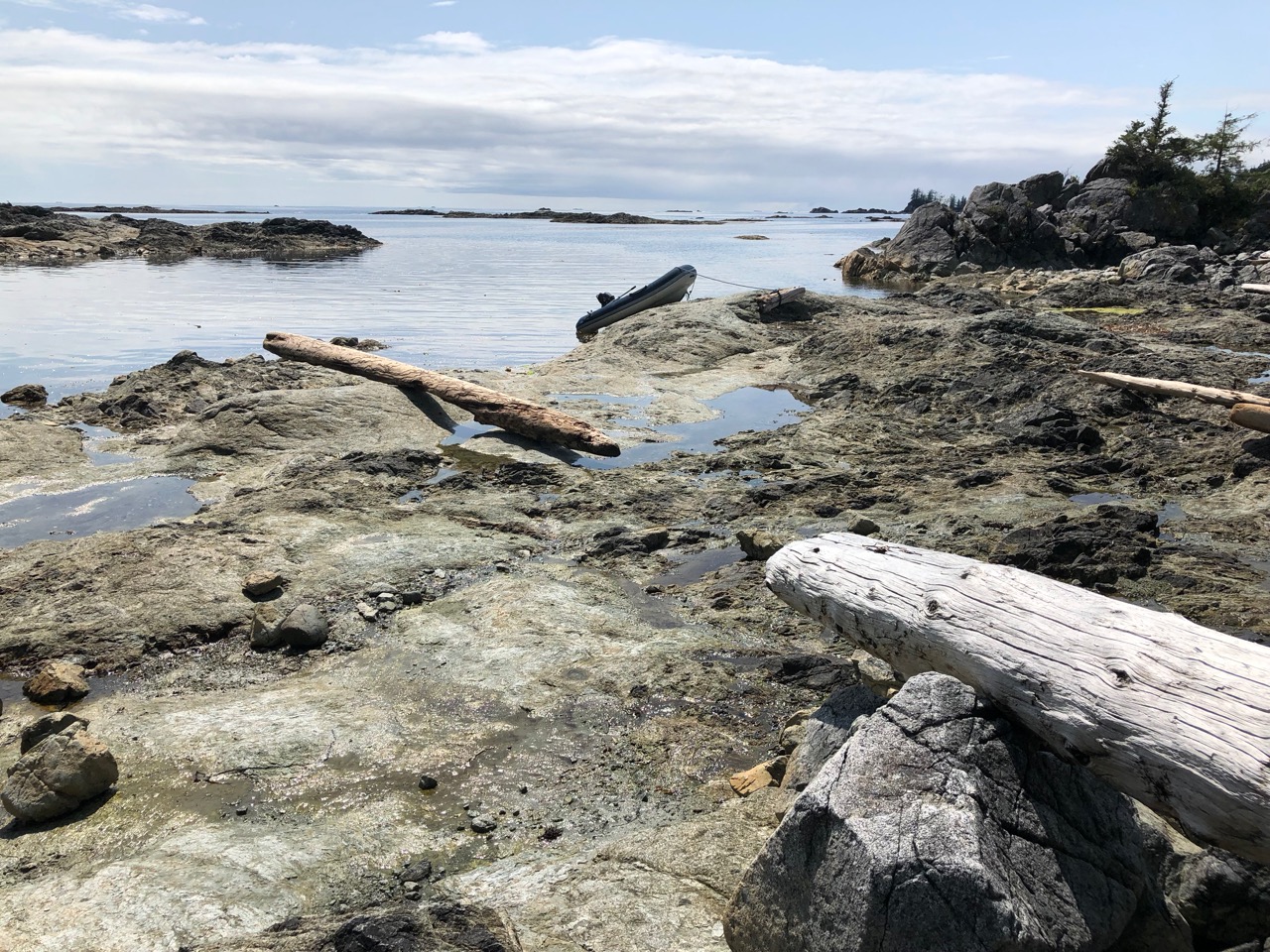
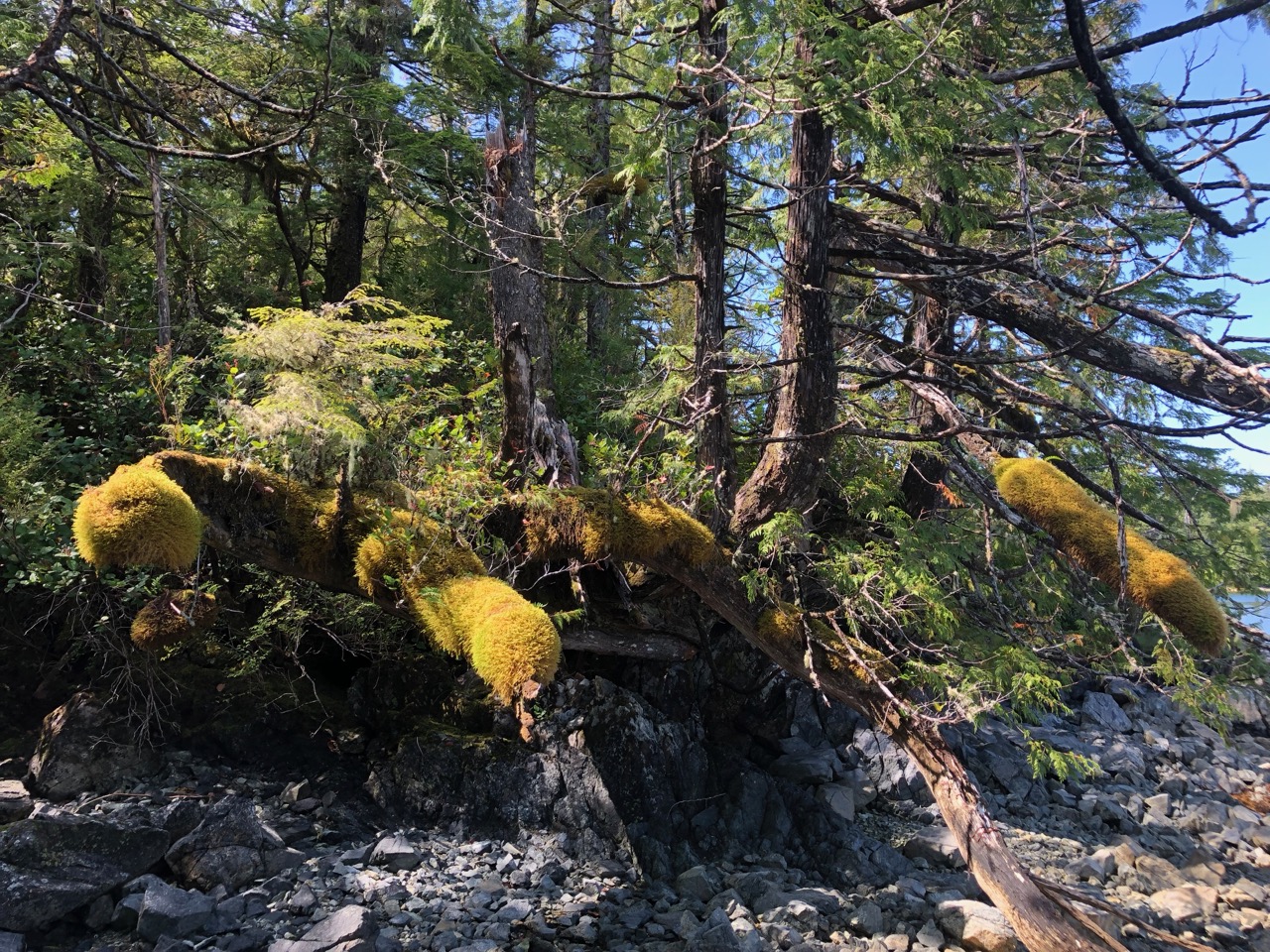

Friday 9th
Left sea otter cove for winter harbour. This was a shortish hop along the west coast of the Island. Not long after we arrived Robert & Vanessa arrived and tied up behind us on the public wharf. I have found a new easier way to catch fish, basically I walk along the dock until I see a fisherman who has a load of fish, then I hang around complimenting him on his skills until he realises the best way to get rid of me is to offer me some fish. Today my neighbour, two elderly gents from further south down the island offered me a small Coho Salmon, When I say small, After I had sliced it into a load of steaks, I had 6 meals stowed away in my freezer and a large fillet for my dinner that night. They were lovely gents, and went on to explain what I needed to do to be sure of catching my own salmon, and one of the gents disappeared below and returned with a load of spinners, hooks and spoon things, which he gave to me. This would ensure I would catch fish. We will see.

Winter Harbour is a lovely quiet resort. While sitting in the boat, two policemen came to visit me, RCMP guys, and asked me a few questions, once satisfied we had a god natter about boating on the west coast. They have a rib they trailer to various location and are responsible for enforcing the law on the water here.
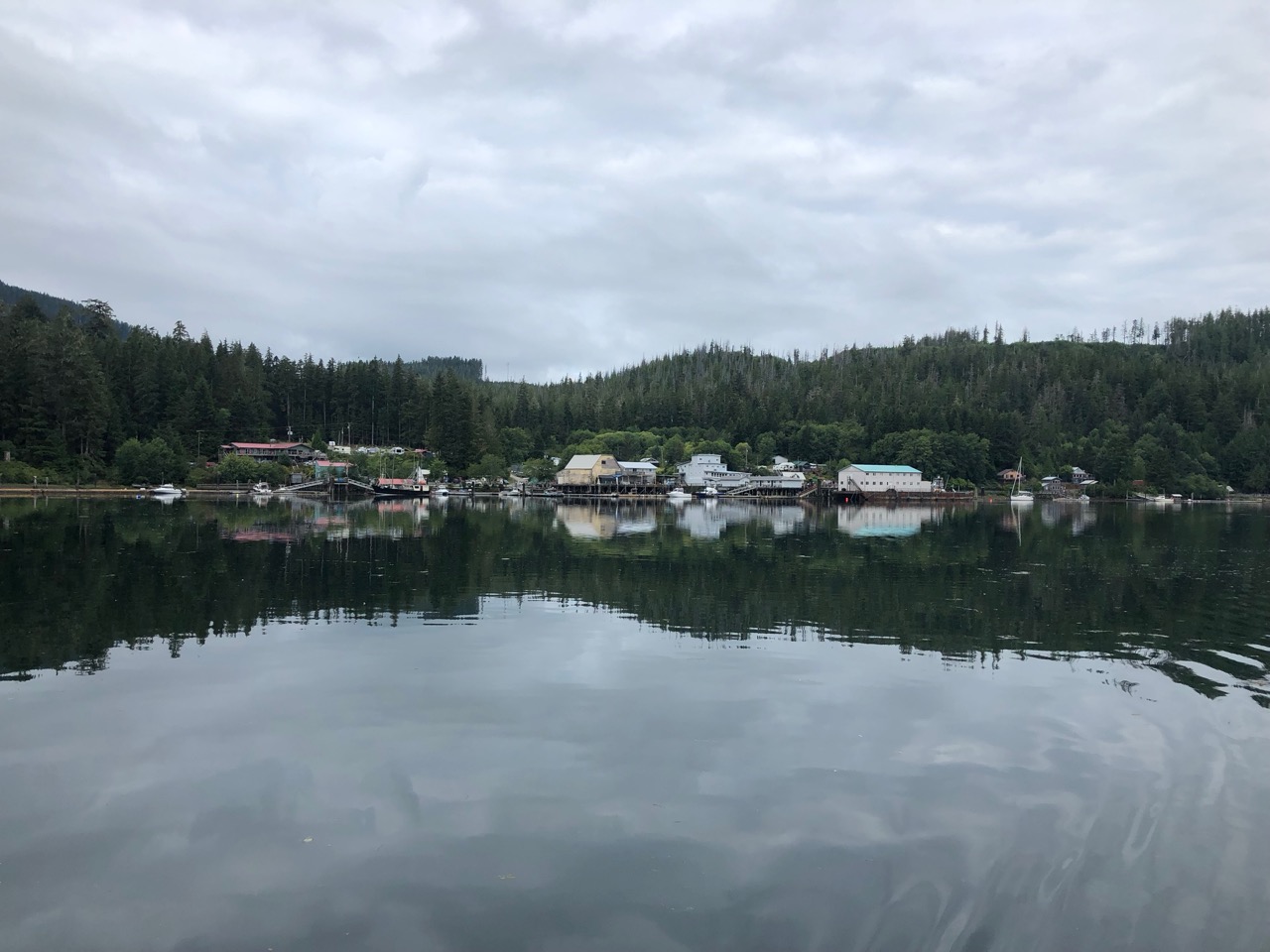
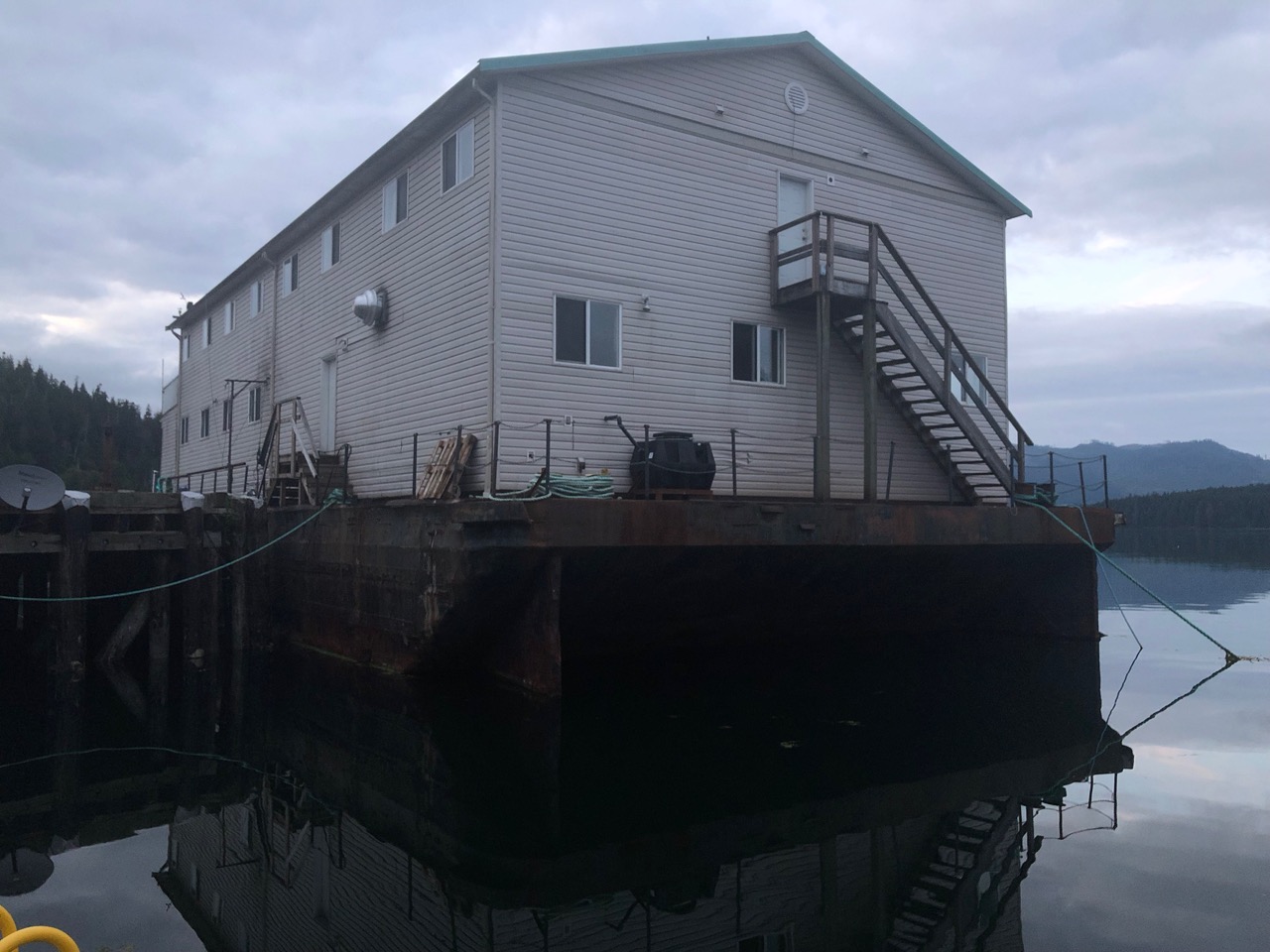
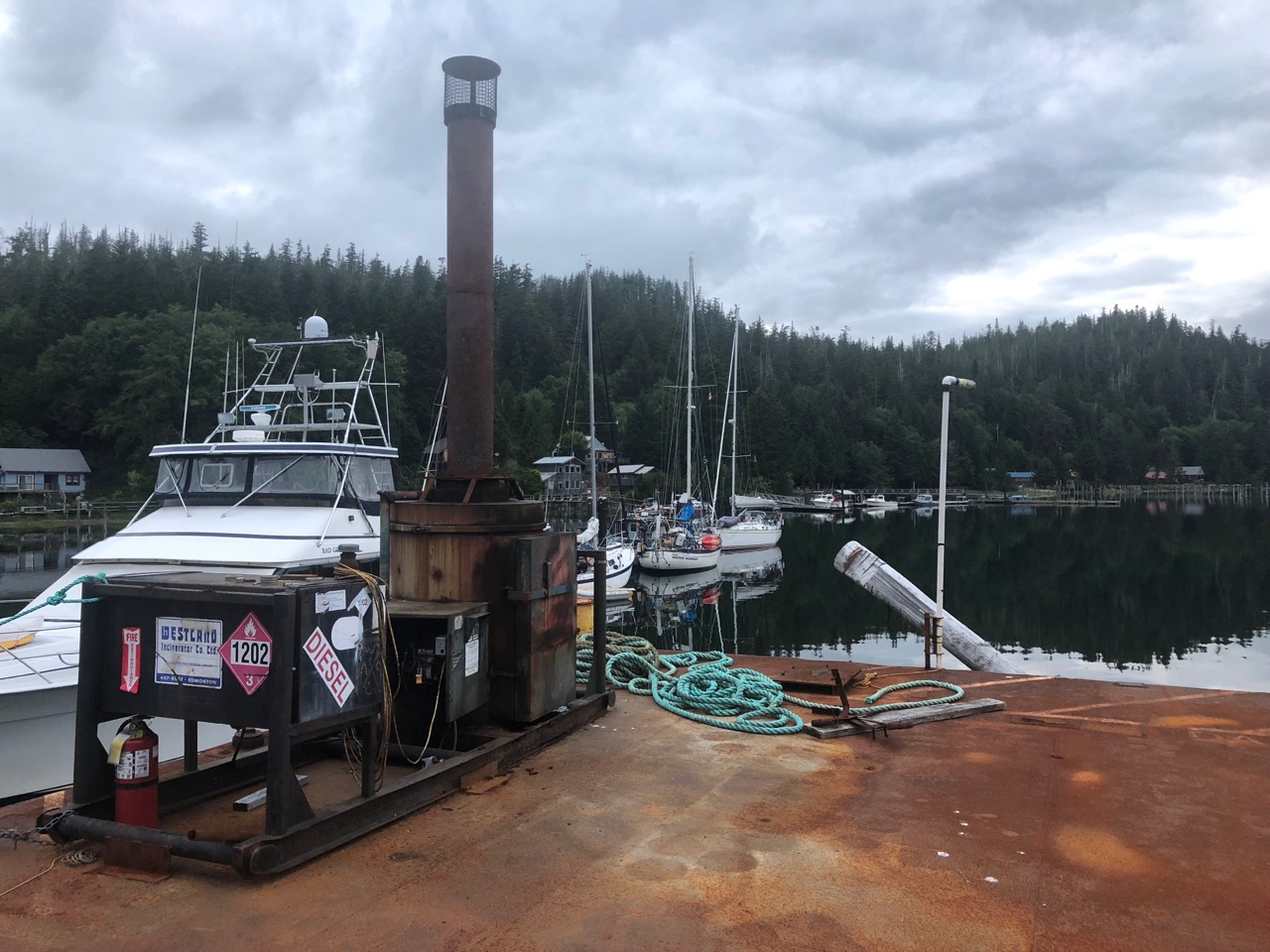
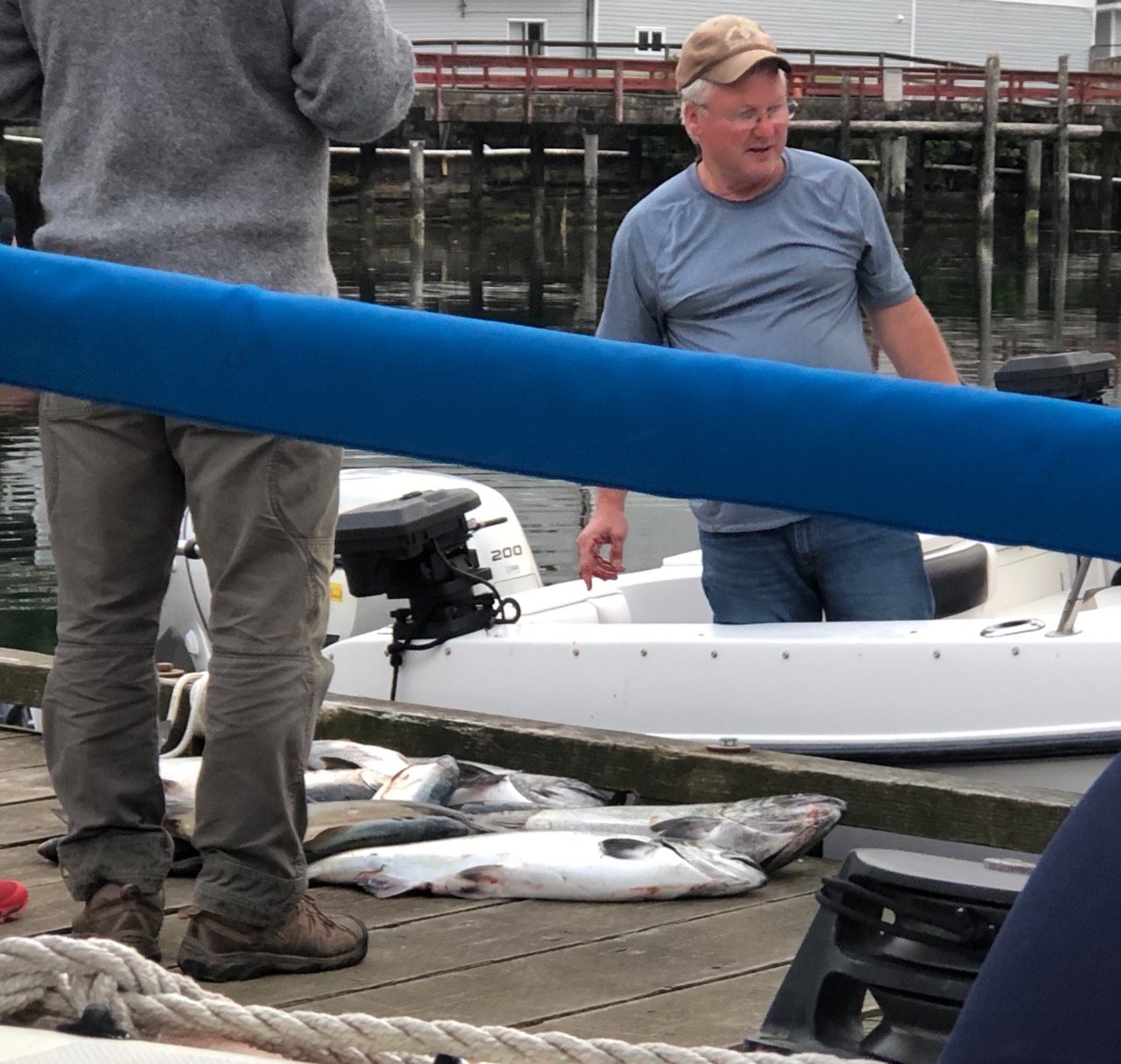
Saturday 10th
Had a second day in Winter Harbour, just lazing around. It’s an interesting place with plots of land being sold off for around £20k which were big enough to house a large caravan and have a small garden area. Later that day we scooted over to the far side of the harbour to get close to a black bear and her two cubs that were walking along the beach.
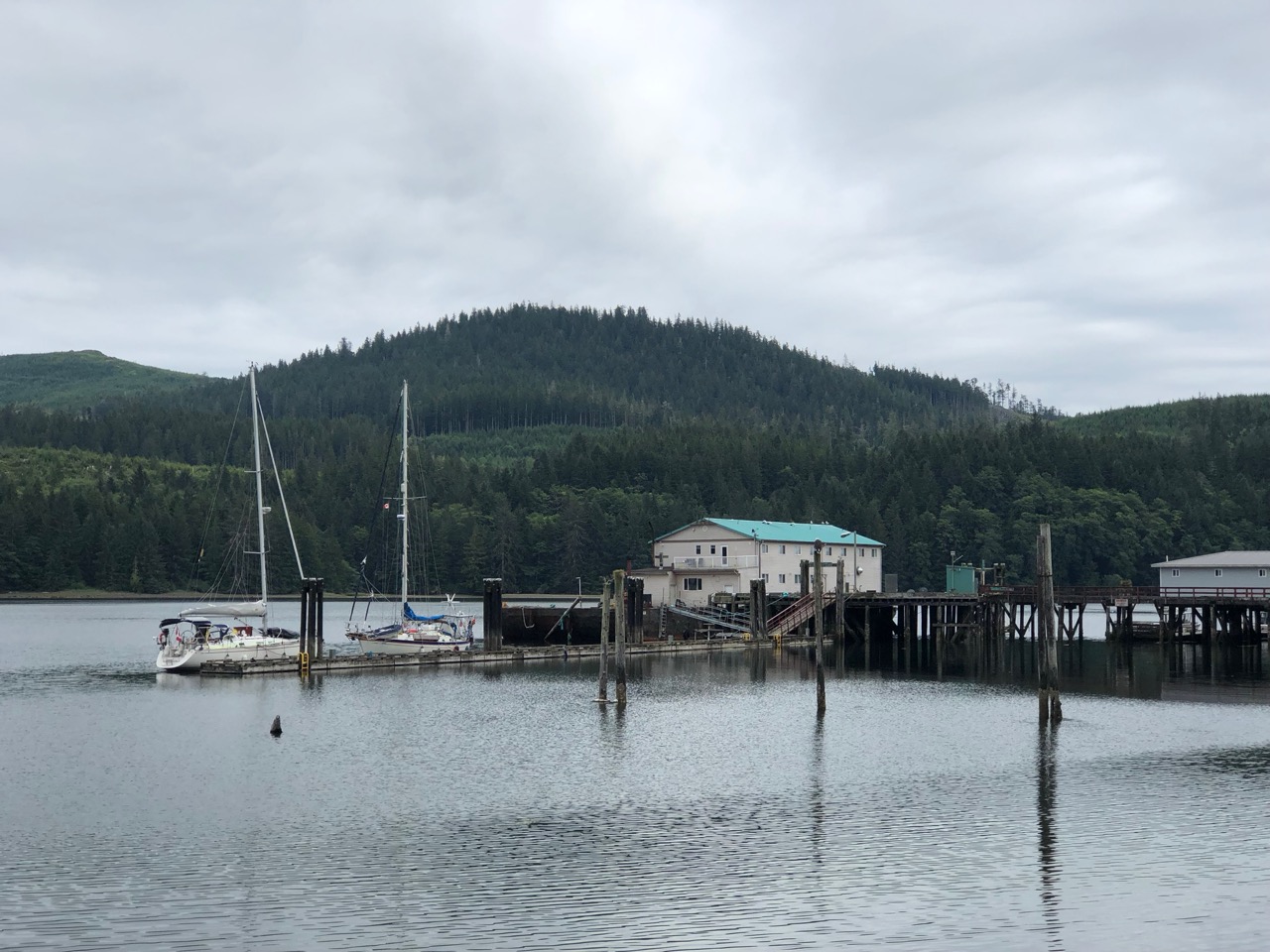
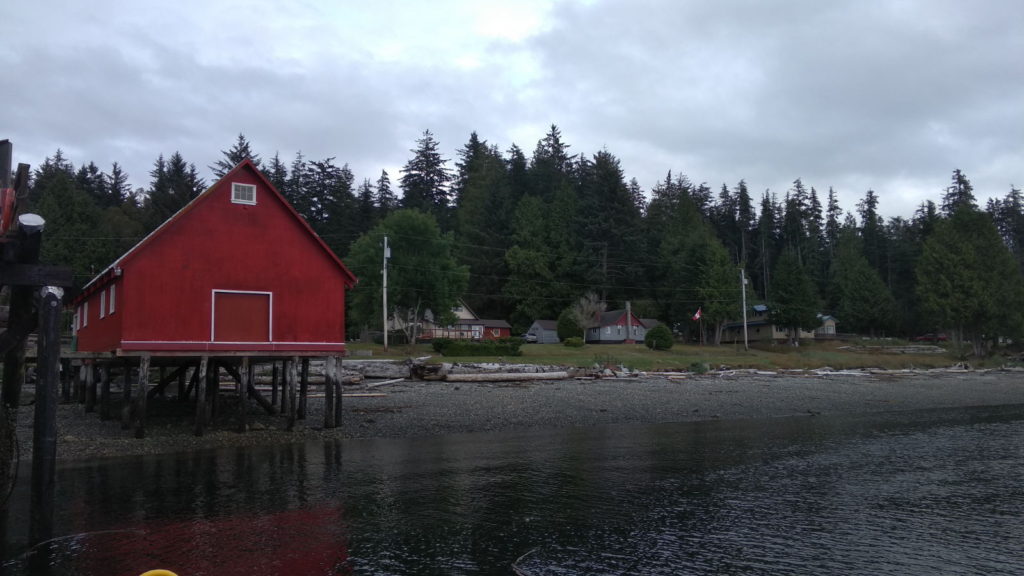
Sunday 11th
Left winter harbour for the 4 hour trip to Klaskish Basin, approached through a very narrow opening in the hills, about 50m wide at the narrow part, it was fun navigating through the gap. Robert and Vanessa on ‘For Good’ where there and later we all headed to the beach at the end of the basin in our dinghy, dropped our little dinghy anchor and sat drinking wine and chatting in a glorious surrounding. We had hoped to see bears but we didn’t, Robert spotted some earlier on his way in to the basin, but he’s an expert at that, we are getting better. Soon the rain returned, then fog descended and we retired to our respective boats for the night.
Monday 12th
We left around 10AM to pass around the famously dangerous Brooks peninsula, another doom and gloom voyage according to the pilot book we had. The forecast was for 20knt winds from the south on exposed headlands, but I didn’t mention this to Robert as I didn’t want to put them off, and I was confident we wouldn’t have any issues, as we approached Solander Island, just of cape cook at the NW end of the peninsula I could see some waves just starting to break, but nothing too serious so we pushed on. Passing between the headland and the Island, in order to see the seal colonies, we turned into 15 knot headwinds and seas of about 2-3ft. The boat was slamming into the waves occasionally, and I wondered how Robert and Vanessa were fareing, being a smaller and lighter boat they had it a bit worse but they coped well. We slowed down a little not to get too far ahead of them. We saw just one seal on the rocks, but boy was it huge, and really well camouflaged. Once we rounded the SW corner of the peninsula we had the waves on the beam (Side on) this causes an uncomfortable roll on the boat, and I think the others struggled a bit with that, we hoisted our staysail and that steadied the boat a little. After about 7 hours total of lumpy sailing we were in the Bunsby Islands, and nestled in-between the islands are a few little coves which are very pretty and well protected from the pacific waves and wind.
Heading into West Nook, we were motoring around looking for a spot to anchor away from the centre, partly to leave room for ‘For Good’ to fit, but also to get as far away from the entrance as possible in case the wind shifted when we had that horrible experience of hearing the keel bounce along some rock and the boat rapidly come to a halt. All the reversing, turning, pushing and pulling that ensued wouldn’t budge us, however we had gone aground 15 minutes before low water. It had been a relatively soft grounding, and I just went below and got on with other things, confident that in the next hour we would float off. I called Robert on CH16 to let him know, he had chosen to anchor in another cove, and I explained we had gone aground, he offered to dinghy over to help, but I explained we were fine. Really I shouldn’t have been chatting on CH16, but I didn’t expect anyone to hear our low power signals, unfortunately the coastguard was on quickly calling,”Vessel that has gone aground, this is Prince Rupert Coastguard” . What followed then was a bit of discussion about how I didn’t need to be rescued, everything was fine but he would still notify the search and rescue team. I was happy an hour later to call him back and let him now we re-floated and where at anchor now without any issues. I expect there’s a bit more gel coating to repair on the bottom of the keel again. Looking at the chart, the rock we hit is marked but not where it is, the avionics chart is wrong.



Tuesday
We spent the day dinghying around the islands exploring the many little coves and beaches, I was looking for debris washed up from the Atlantic, and there were certainly lots of floats and buoys around, but I wanted to find a Japanese glass float, I was always fascinated by the ones my grandmother had as ornaments when I was a kid. Debris from Japan washes up here, a while back a small fishing boat from Japan washed up, it and it’s captain had been missing in Japan for many months, sadly the captain wasn’t found. I didn’t find the glass float, which isn’t surprising as I couldn’t find one in Japan, I think they stopped using them just as soon as plastic was invented. Later we sat in the cockpit of ‘For Good” and discussed how to get to Mexico easily. Robert and Vanessa want to ‘boat buddy’ with us on the trip south, especially the first overnight passage from Canada to the USA. While chatting another couple from Austria pulled up in a RIB, they had arrived earlier and were in a 40ft Aluminum Ovni sailboat. They had arrived here from Alaska via the NorthWest passage, a treacherous sailing route that very few yachts had traversed. They had been sailing around the world since the 80’s so instantly any seafaring wisdom I felt I had evaporated in their presence. They are heading back to the Pacific via Mexico so I hope we meet up with them again on the way.
Wednesday 14th
Departing from the Bundsby islands at 09:30 we made the short passage to Walters island about 10 miles away in about 2 hours. We hugged the coast dodging many rocks along the way. The entrance to the cove that sits between the island and the main Island is quite a twisted zig zag of a route and you have to follow the red and green poles that guide you in. Once in you are in a safe settled area that is full of pretty fishing lodges, the general store has a few basic supplies and limited fresh produce, but I did restock on bananas. Later we had pis and ice cream at the cafe/restaurant called Java the Hut, another lovely spot, with great food on offer.

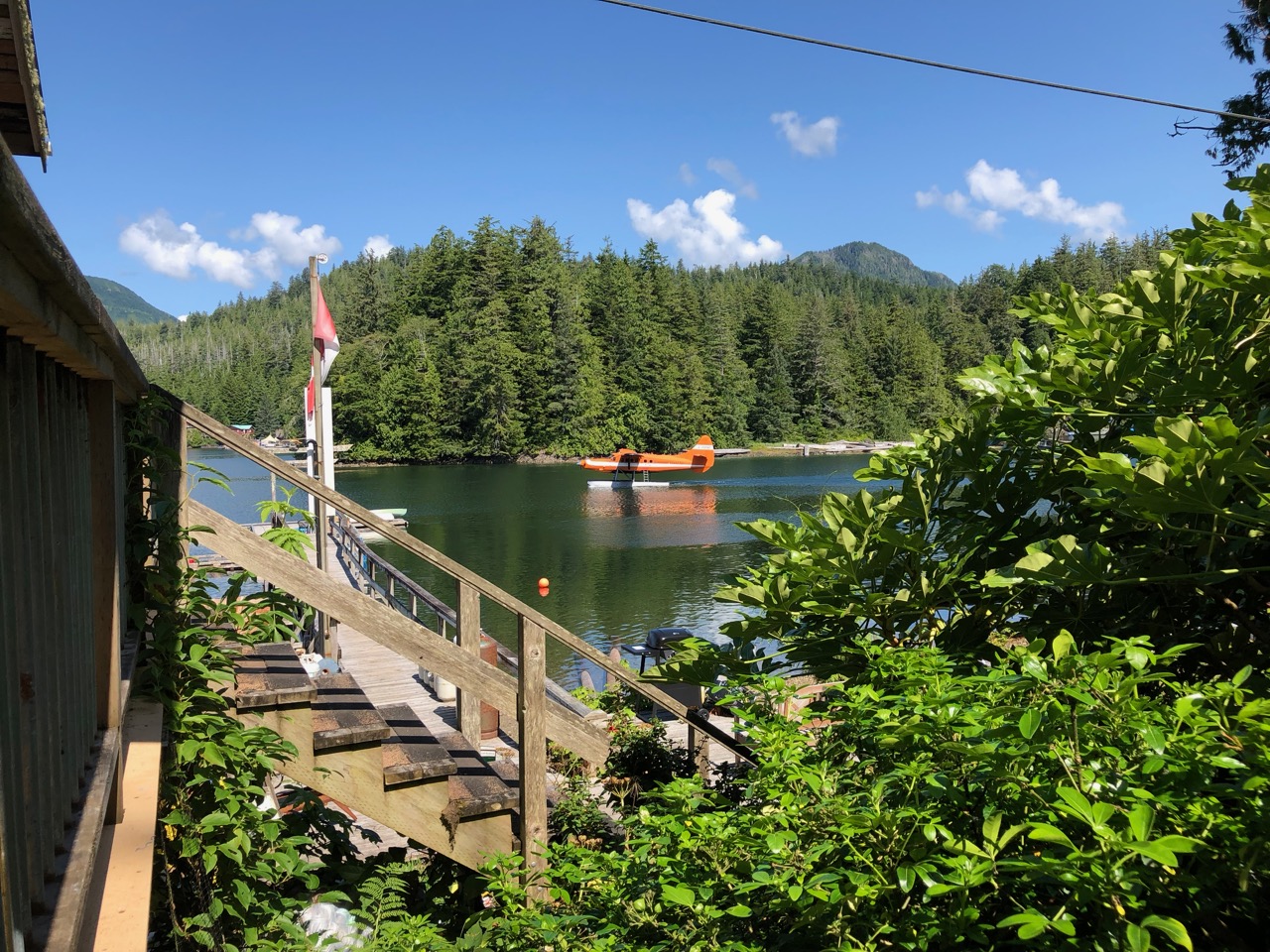

Later I worked on correcting the problems with the autopilot. It doesn’t follow course properly, and the error code 67 keeps popping up, first off I aligned the rudder feedback sensor so the when the rudder is midships the sensor also says midships. When I tested it it said the rudder was off by 11 degree, so I wondered if that might be the issue. My problem is that with the rudder aligned centre, checked by climbing under the stern from the dinghy, then the rudder stock and quadrant are not dead canter. But off by 11 degrees. Also when we motor along, the wheel is marked for midships, and this is the position that keeps us going straight, however this is the same 11 degrees off. None of this makes sense, it appears that the rudder stock (The pole from the rudder into the boat, isn’t in line with the rudder, and that the rudder has to be 11 degrees to port to go straight ahead. SO I resigned the rudder sensor so it says 0 deg offset when the rudder is actually midships, and we will see how that affects things. Is this 11 deg needed to offset the transverse thrust when going ahead?
Thursday 15th

A lazy day dinghying around the cove, we visited the shop across the bay in the First Nation village, but they didn’t have much. They did have a second hand bread maker for sale for $50 which is very tempting, we plan to buy one soon for the boat, but I need to wire up the big inverter first.
WiFi is rare out here and cellphone / 3g/4g non existent for us on our AT&T phones as their Canadian partner ‘Rogers’ doesnt have any coverage on the west coast of the island until we get far south.
We are past the most tricky parts of the west coast passage now, and it’s going to be gentle sailing the rest of the way we hope. Saying that the forecast is for 35 knots this afternoon which would be too much for us to be setting off in. We will spend the next two days in sheltered inland inlets until it’s safe to go back out into the Pacific.


Great blog, you don’t get much luck with iPads 🙁 sounds lovely places your visiting!
If the rudder sensor is reading off-axis, it shouldn’t matter to the autohelm as that’s following a compass course. It uses a PID controller which will adjust for any supposed offset. “Hey, on this boat, I need to keep the rudder at -11 degrees to go in a straight line! Weird!” Like the way I steer, it just keeps pushing the rudder over until it gets the course it wants, and then pulls back slightly. It does sound like some sort of over-correction though if it can’t maintain a straight line. If I remember correctly, that’s the ‘differential’ part of the PID controller (the D term). You should be able to adjust the sensitivity in the software. It’s interesting reading up about PID controllers, if you’re ever interested in replacing the whole bloody lot with a suitable programmed Arduino. I’m always amazed that the manufacturers can set the P, I and D terms for an autohelm and have them work on everything from a high-aspect keel VO70 to a long-keeled high DLR boat. I have always suspected they compromise, and have spent far too many days and nights staring at the autohelm, questioning its morals and its seafaring abilities.
Interesting blog Paul and great photos, loved the one of the sea otter. Perhaps in the next one we will hear that you have caught a fish!! xx